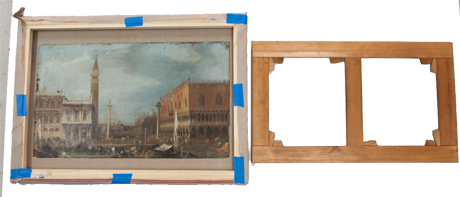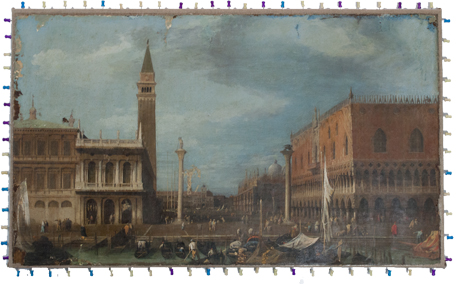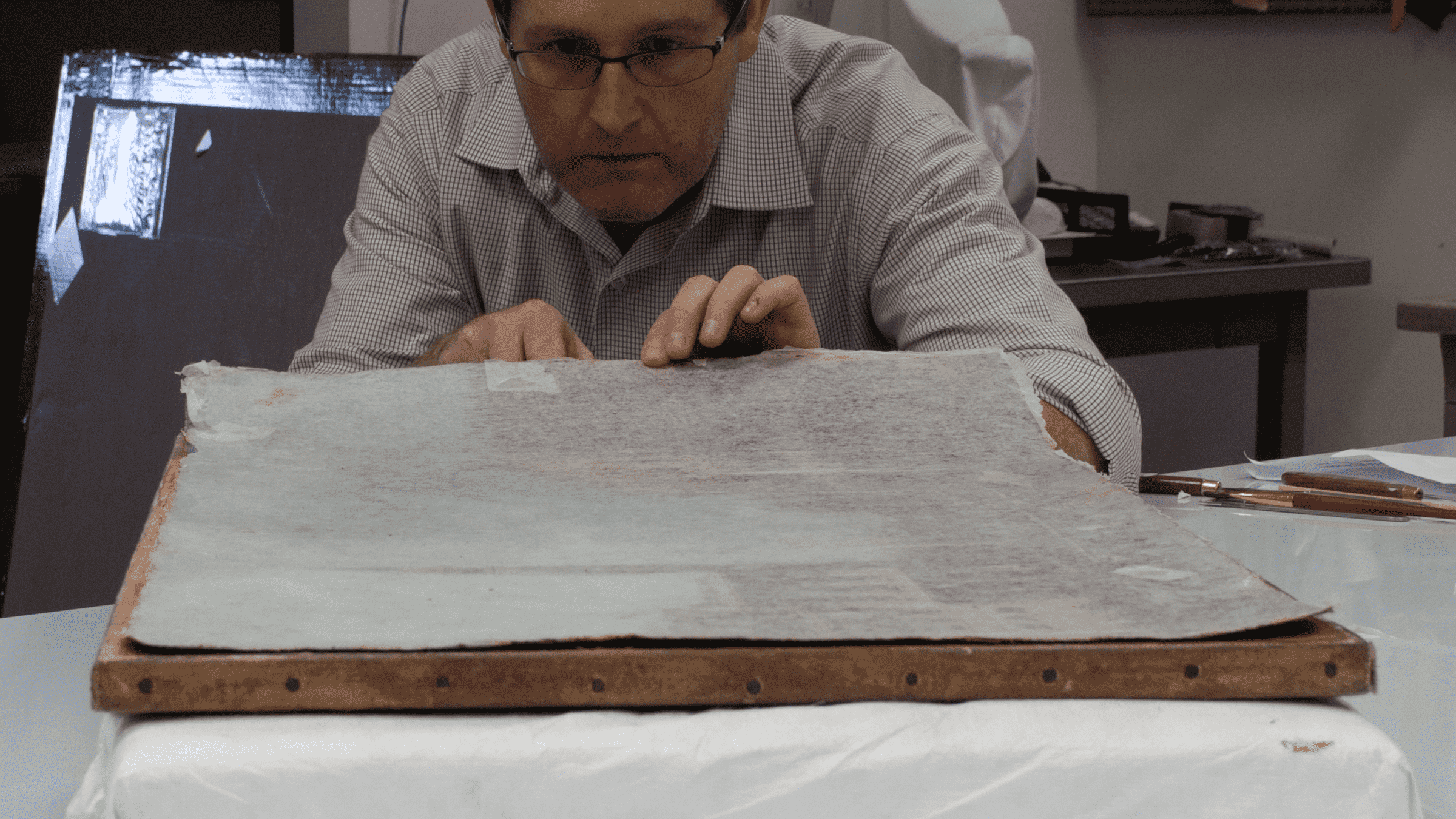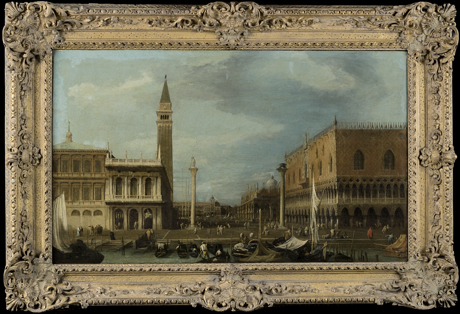Now that I’ve reduced the distracting bumps caused by the previous lining adhesive, I must now re-line the picture to another auxiliary canvas support. I was hoping not to have to re-line the picture, but it was not possible to locally mend the tear since the fibers along the tear edges were too frayed and weak.
Instead of using a glue/paste adhesive like the one used in the previous lining, I used a modern heat set adhesive designed specifically for this conservation purpose. Knowing the adhesive’s characteristics, like its melting point for example, I can control the temperature used in the lining process, ensuring it's not too hot for the painting itself. If the temperature soars too high (roughly above 200° F), oil paint can become malleable (flexible) and I could inadvertently flatten the paint or impart a texture into it. Here we go!

I first prepare a lining canvas—generally a linen or synthetic canvas that possesses a finer weave than that of the original. Then, I apply a synthetic size (an isolating layer) to the canvas so that the adhesive, when heated, does not bleed through to the reverse. Next, I place the original canvas on the lining canvas and trace its exact shape, then tape out the outline of that shape. See the image above. I then apply the viscous adhesive to the canvas, ensuring that it is absolutely level, and let it dry.
I used the vacuum hot table, again, but this time to bond the two canvases together. By controlling both the temperature and pressure, I can guarantee a secure bond between two canvases without causing any damage.

After the painting was lined, I restretched it back onto its original stretcher. I had to first center the canvases, since the original canvas is actually smaller than the dimensions of the stretcher. Once the painting was centered, I first used pins to attach the canvases to the stretcher, ensuring even tension.


